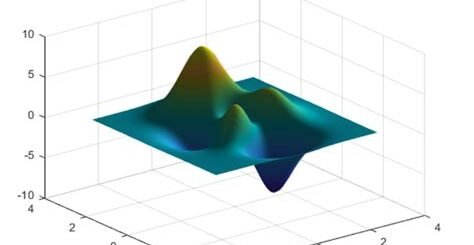Working with RF Toolbox for Matlab
Are you looking to design and simulate RF circuits and systems with ease? Look no further than the RF Toolbox for Matlab. In this blog post, we’ll explore the various features and capabilities of the RF Toolbox, a powerful tool for RF engineers and researchers. From understanding the basics of the RF Toolbox to simulating RF circuits, designing filters, characterizing components, and optimizing system performance, we’ll cover everything you need to know to get started with this essential tool. Whether you’re new to RF design or an experienced engineer, this blog post will help you unlock the full potential of the RF Toolbox for Matlab and take your RF projects to the next level. Let’s dive in and discover how this versatile toolbox can streamline your RF design and development process.
Understanding the RF Toolbox
Understanding the RF Toolbox in Matlab is essential for anyone working with RF circuits and systems. The RF Toolbox provides functions and apps for the design, analysis, and visualization of RF components and systems. With the RF Toolbox, users can develop RF system models, analyze RF circuits, and simulate the behavior of RF components. The toolbox also includes functions for RF budget analysis and RF link analysis, making it a versatile tool for RF engineers and researchers.
One of the key features of the RF Toolbox is its support for RF data analysis and visualization. Users can analyze RF data using functions such as vector network analysis (VNA), spectrum analysis, and signal processing. The toolbox also includes tools for visualizing RF data, including plots for S-parameters, Smith charts, and constellation diagrams. This makes it easier for users to understand and interpret RF measurements and data.
Another important aspect of the RF Toolbox is its support for RF filter design and analysis. With the toolbox, users can design and analyze RF filters using different filter topologies, such as Butterworth, Chebyshev, and elliptic filters. The toolbox provides functions for filter synthesis, frequency response analysis, and impedance matching, allowing users to optimize the performance of their RF filters.
In conclusion, understanding the RF Toolbox in Matlab is crucial for anyone working in the field of RF engineering. The toolbox provides a wide range of functions and tools for RF design, analysis, and visualization, making it a valuable asset for RF engineers and researchers. By leveraging the capabilities of the RF Toolbox, users can effectively design and optimize RF systems, analyze RF circuits, and characterize RF components.
Simulating RF circuits in Matlab
When it comes to simulating RF circuits, Matlab offers a powerful toolset for engineers and researchers. With the RF Toolbox in Matlab, users can model and analyze RF components and systems with ease. Whether it’s designing a new circuit or optimizing the performance of an existing system, Matlab’s simulation capabilities provide a valuable resource for the RF community.
In order to simulate RF circuits in Matlab, users can take advantage of the built-in functions and algorithms available in the software. This includes the ability to model various RF components such as filters, amplifiers, and mixers, as well as complex systems like communication networks and radar systems.
One of the key benefits of simulating RF circuits in Matlab is the flexibility it offers. Engineers can easily modify parameters and test different scenarios to understand the behavior of their designs. This iterative process allows for rapid prototyping and optimization, saving time and resources in the development cycle.
Furthermore, Matlab’s integration with other tools such as Simulink enables users to create complete system-level simulations, taking into account the interactions between RF and baseband components. This comprehensive approach to simulation ensures accurate results and greater insight into the performance of RF circuits.
Designing RF filters with Matlab
When it comes to designing RF filters, Matlab offers a powerful set of tools and capabilities that make the process much more efficient and effective. With the RF Toolbox in Matlab, engineers and designers can simulate, analyze, and optimize various types of RF filters with ease.
Using Matlab’s Simulink platform, users can create and test different filter designs in a customizable and interactive environment. This allows for quick iteration and fine-tuning of filter parameters to meet specific performance requirements.
Additionally, Matlab’s Filter Design and Analysis Tool provides a user-friendly interface for designing and analyzing various types of RF filters, such as low-pass, high-pass, band-pass, and band-stop filters. Engineers can easily visualize filter responses, evaluate performance characteristics, and refine designs to achieve desired specifications.
Overall, Matlab’s comprehensive set of tools and capabilities for RF filter design empowers engineers to efficiently develop and optimize filters for a wide range of applications, from wireless communication systems to radar and satellite technologies.
Characterizing RF components using Toolbox
When it comes to designing and optimizing RF systems, it’s essential to have a toolbox that allows for accurate characterization of RF components. Fortunately, MATLAB provides a powerful RF Toolbox that enables engineers to efficiently analyze, visualize, and simulate RF circuits and systems.
One of the key features of the RF Toolbox is its ability to characterize RF components with precision. Using the toolbox, engineers can easily extract S-parameters, noise parameters, and other important characteristics of RF components, allowing for in-depth analysis and performance optimization.
With the toolbox’s advanced functionality, engineers can simulate the behavior of RF components under different operating conditions, helping to identify potential issues and make informed design decisions. This is especially valuable in the development of modern wireless communication systems, where the performance of RF components directly impacts overall system performance.
In addition, the RF Toolbox offers a range of visualization tools that enable engineers to gain deeper insights into the behavior of RF components. From interactive plots and Smith charts to impedance matching and stability analysis, the toolbox provides a comprehensive set of tools for characterizing RF components and ensuring optimal system performance.
Optimizing RF system performance in Matlab
When it comes to optimizing RF system performance, Matlab offers a powerful set of tools that can help engineers achieve the desired results. One of the key components in optimizing RF system performance is understanding the various parameters and factors that can affect the overall performance. By utilizing the RF Toolbox in Matlab, engineers can simulate the behavior of complex RF systems and analyze the impact of different design choices on system performance. This allows for iterative optimization to achieve the best possible results.
Simulation of RF circuits in Matlab is an essential part of optimizing performance. With the ability to model and simulate RF circuits, engineers can test different scenarios and configurations to determine the best approach for achieving optimal system performance. Through this process, designers can identify potential issues and challenges, and make informed decisions to improve overall system performance.
Designing RF filters with Matlab is another critical aspect of performance optimization. By leveraging the capabilities of Matlab, engineers can design and analyze RF filters to meet specific performance requirements. This includes optimizing filter parameters such as bandwidth, insertion loss, and rejection to ensure that the filter meets the performance targets of the RF system.
Characterizing RF components using the RF Toolbox is an important step in optimizing system performance. By accurately characterizing RF components, engineers can better understand their behavior and performance characteristics within the system. This information is crucial for making informed decisions and optimizing overall system performance.


